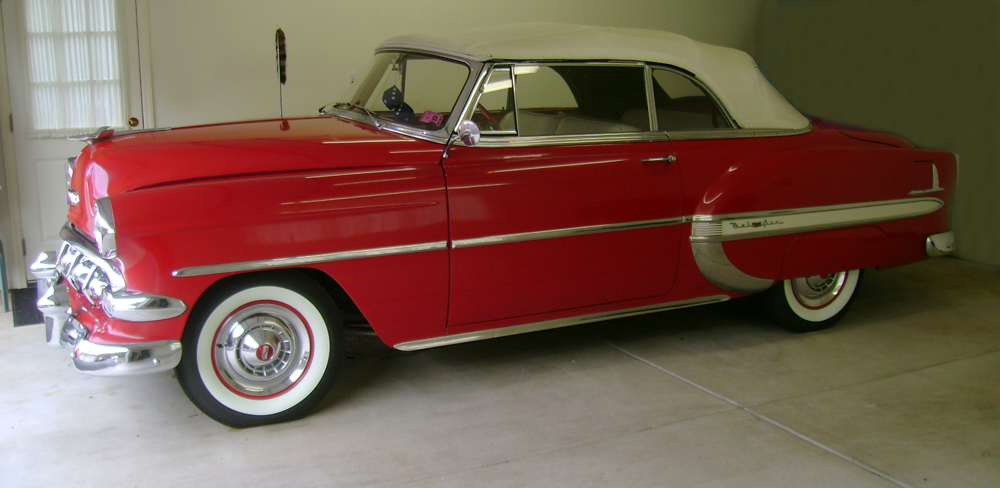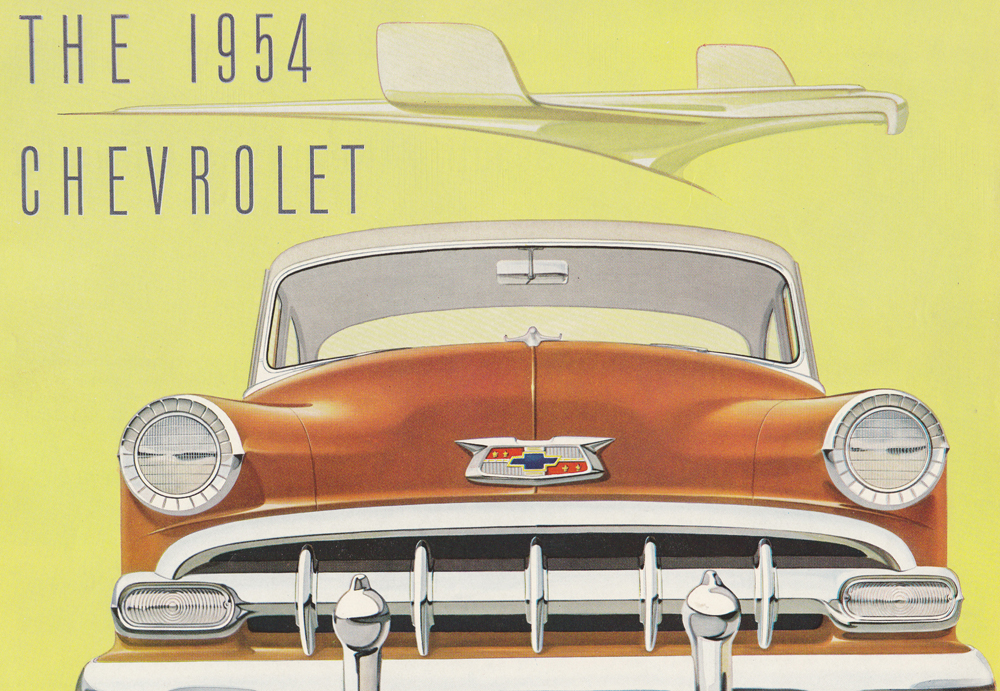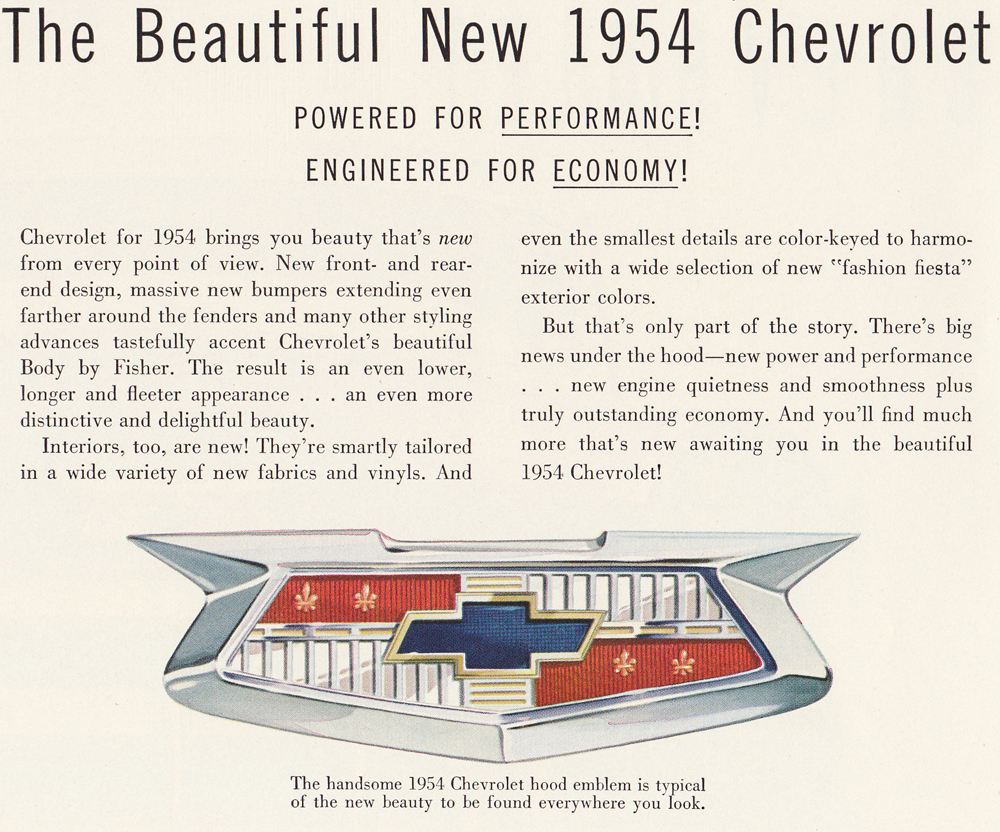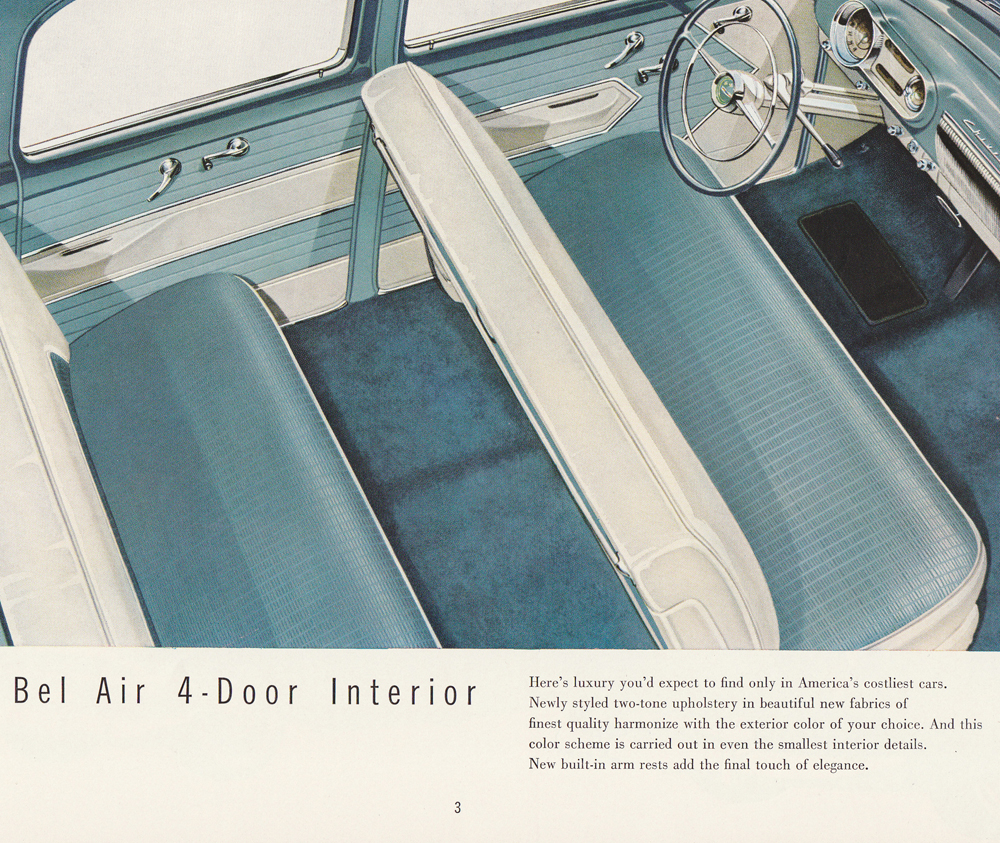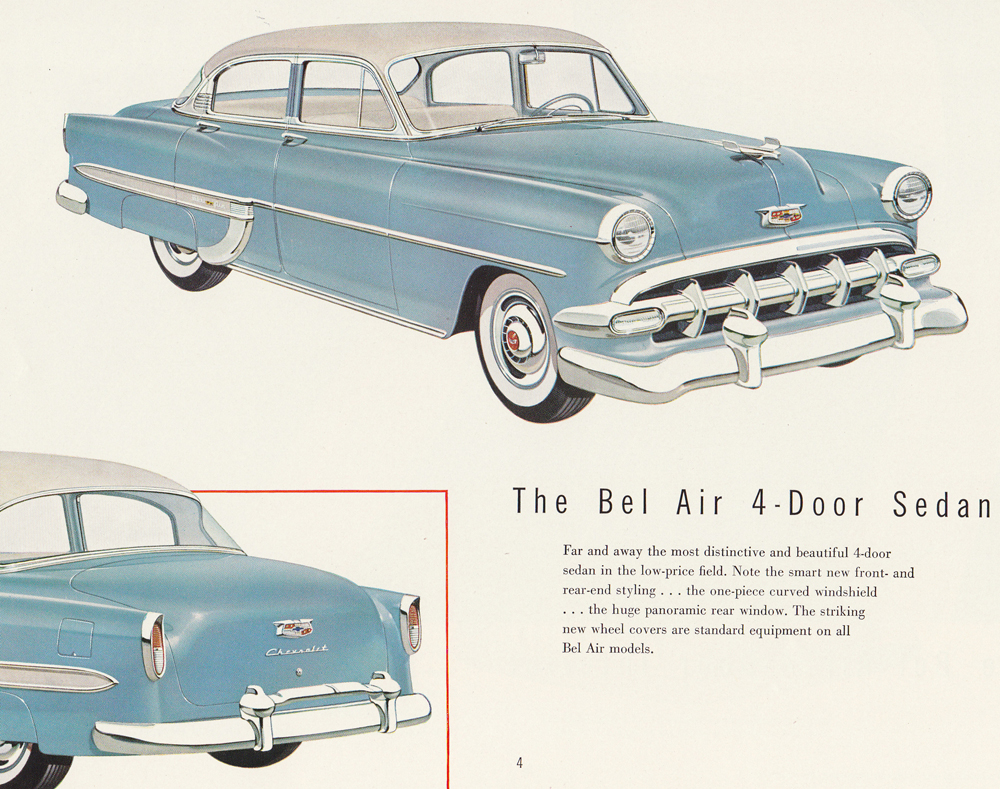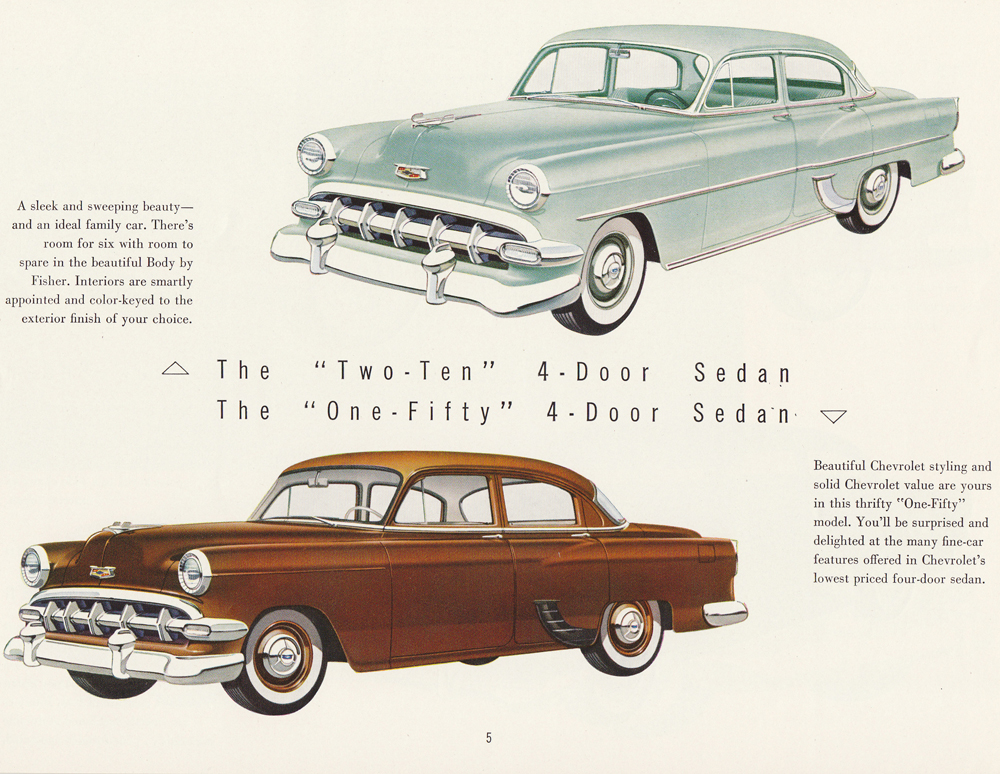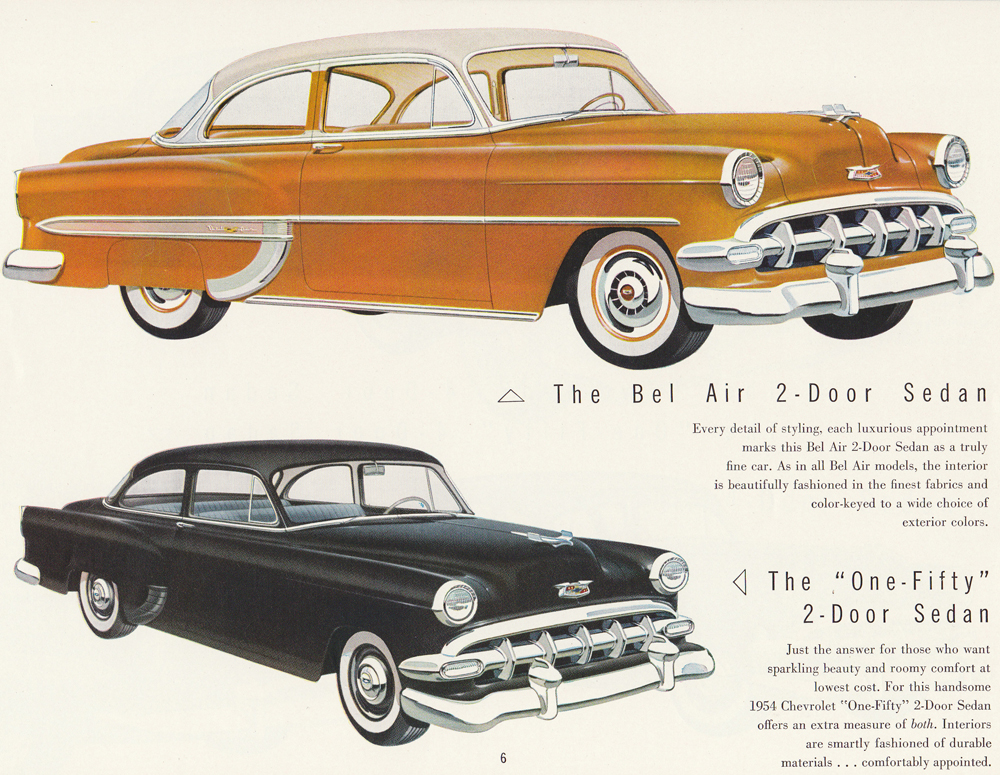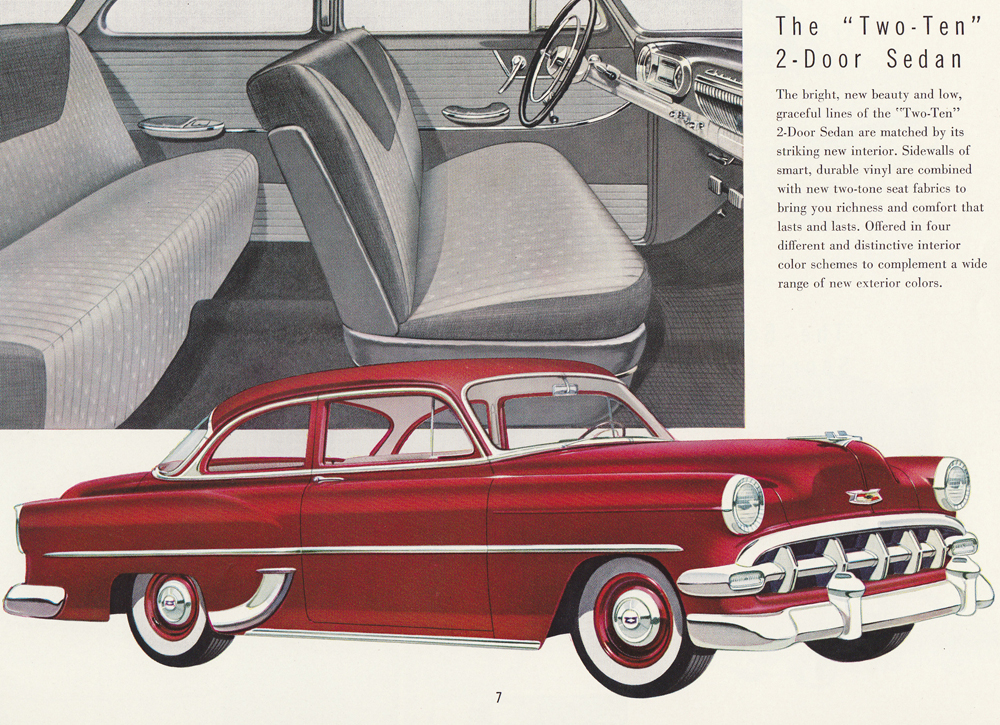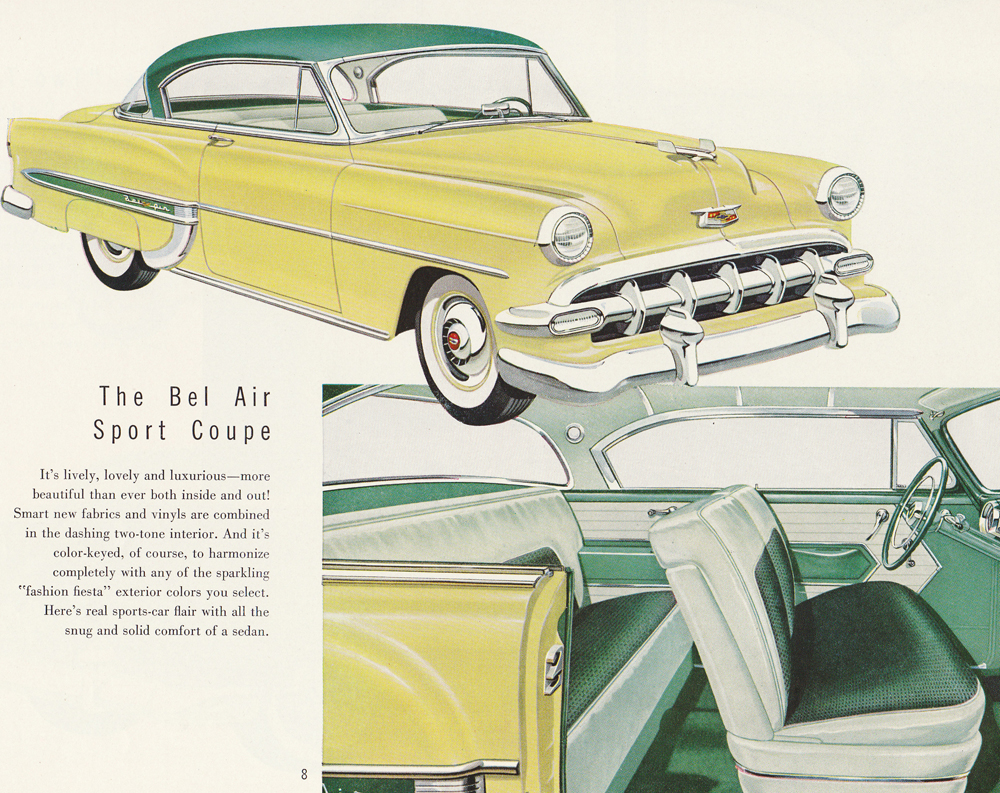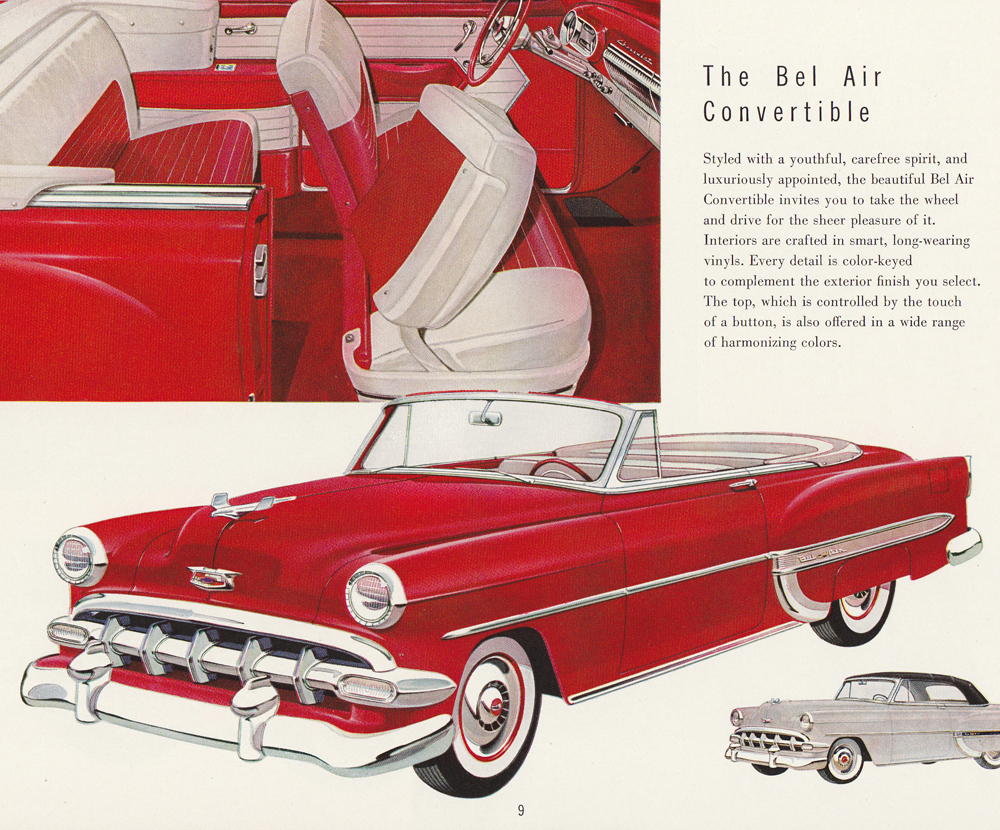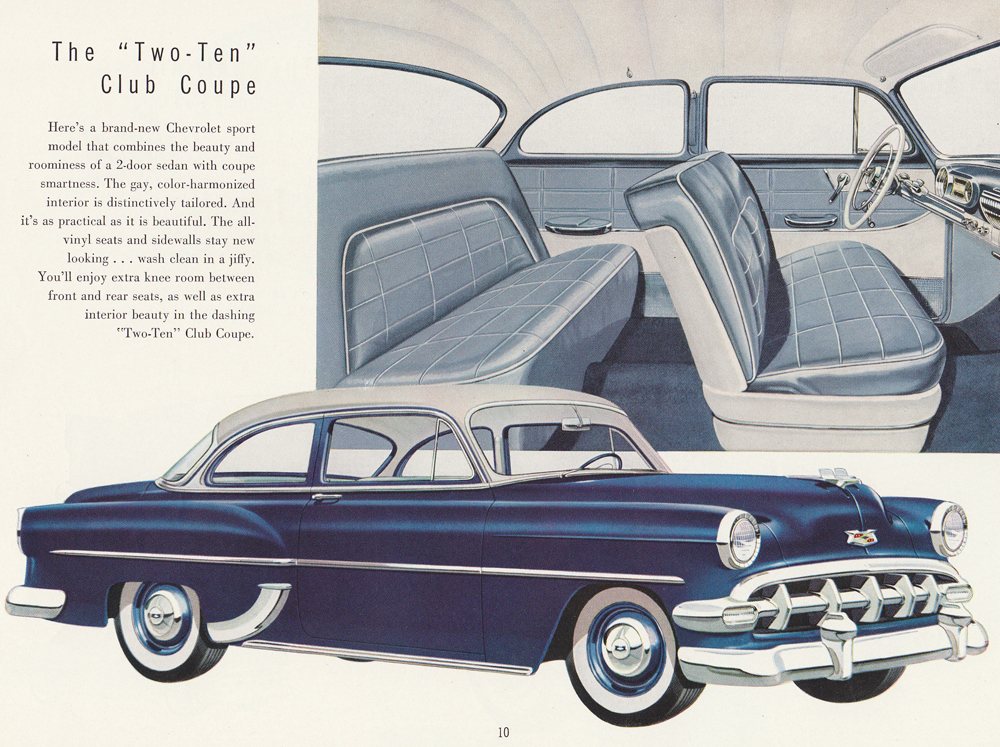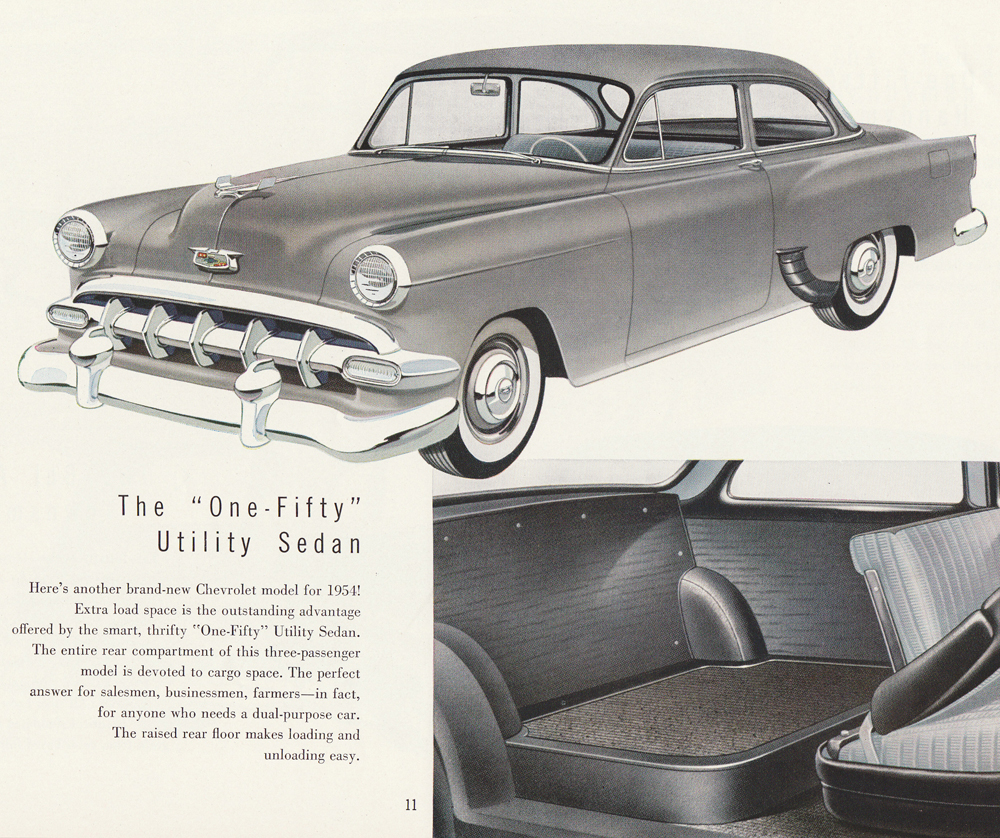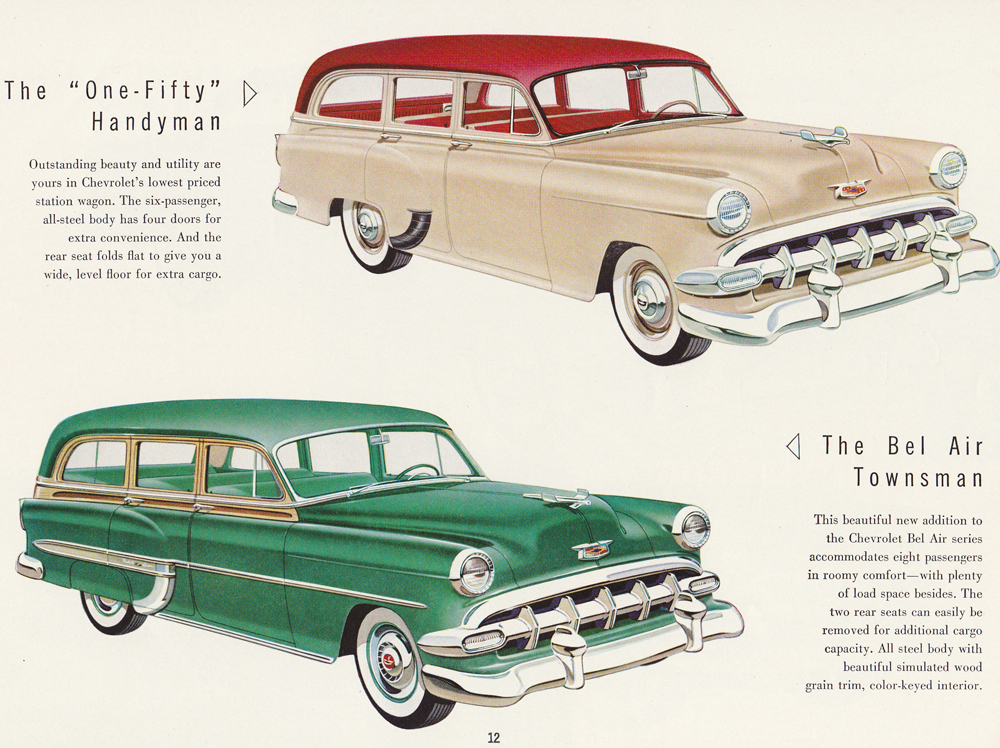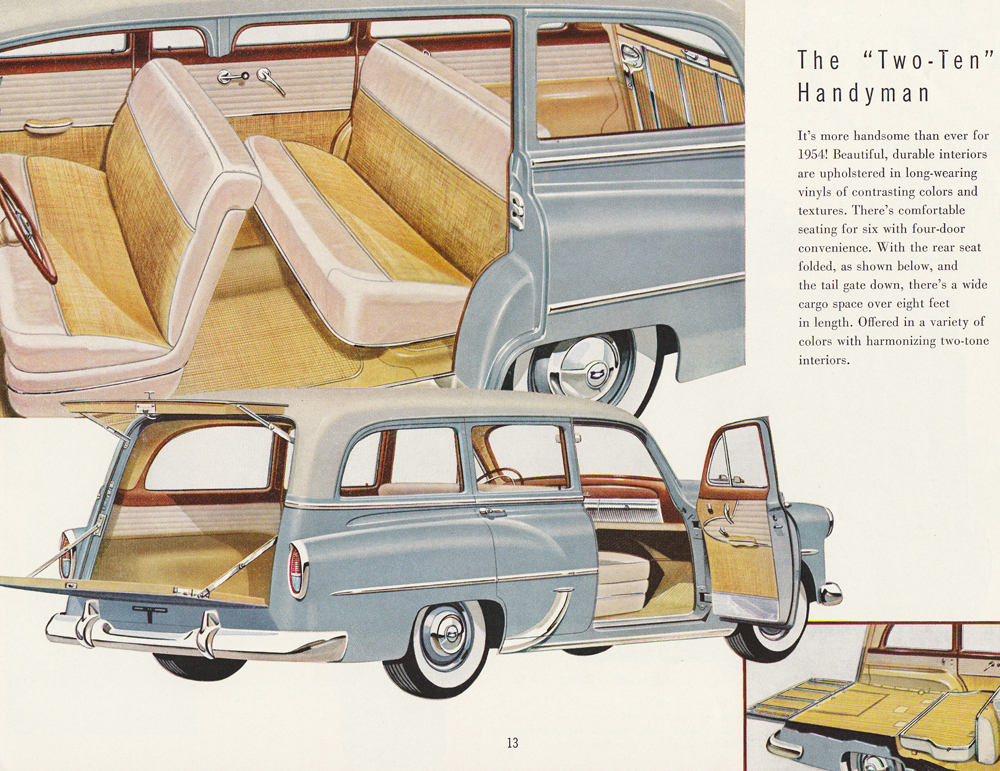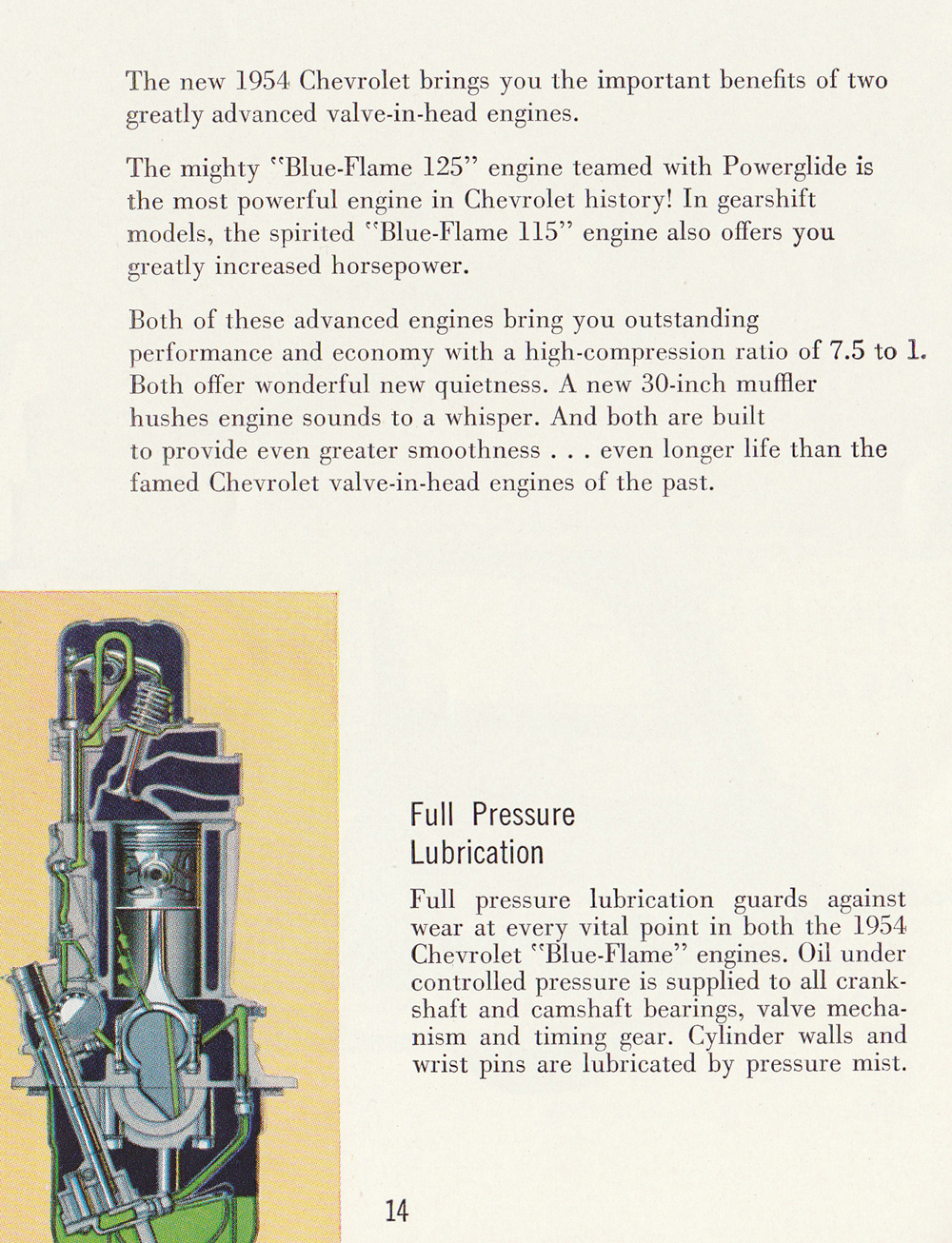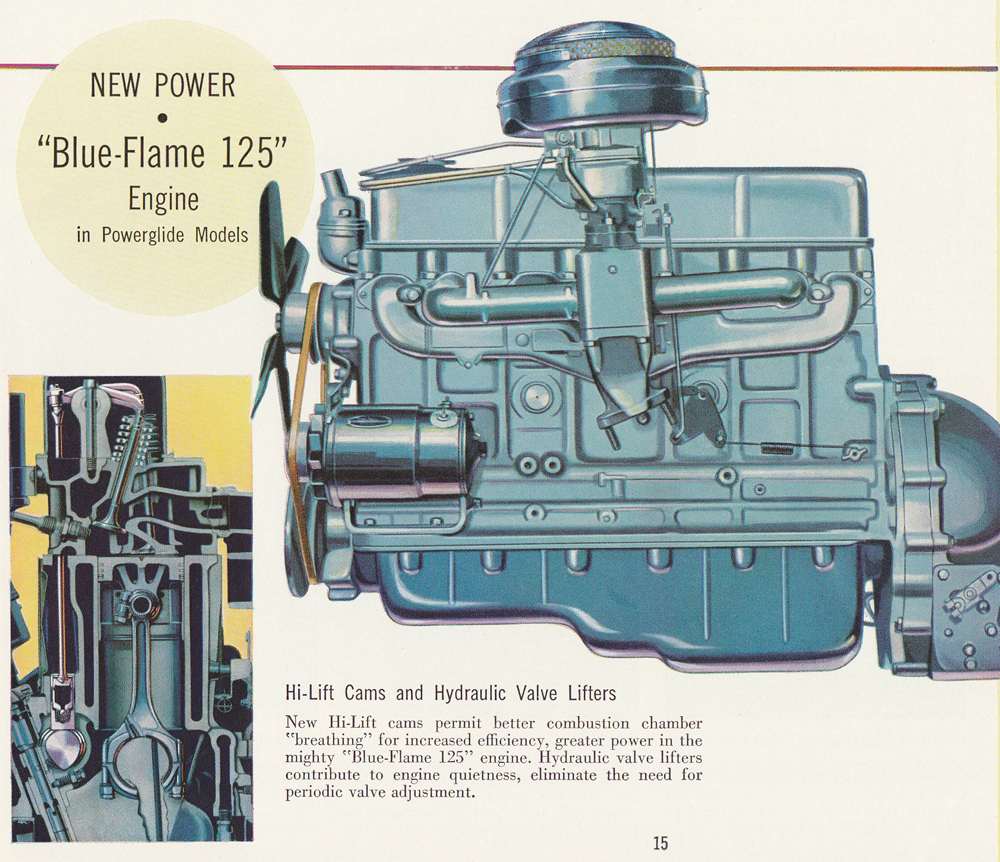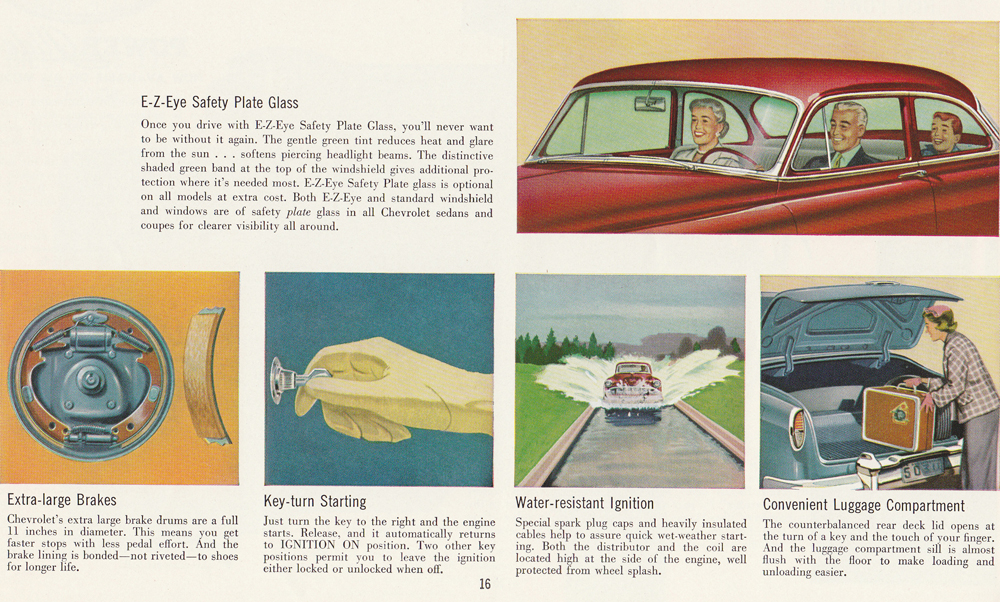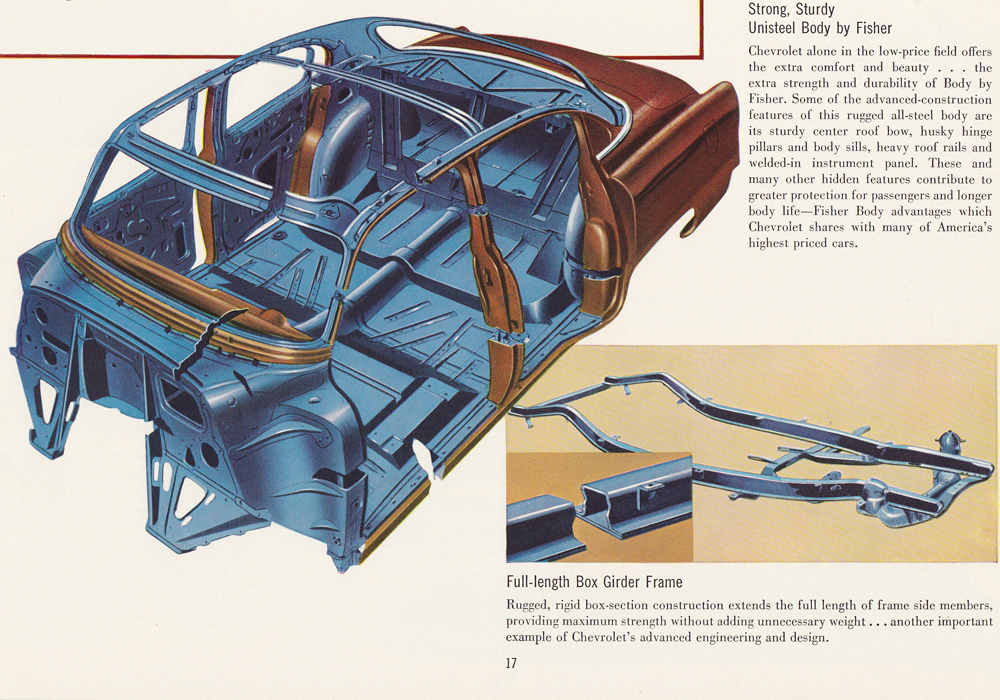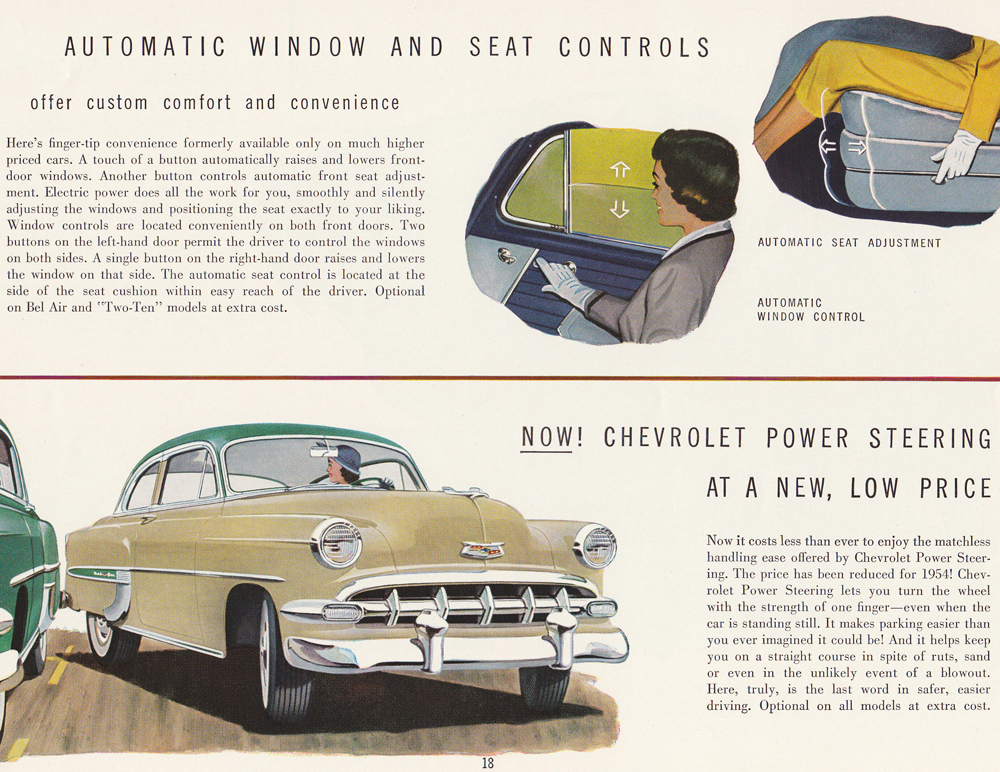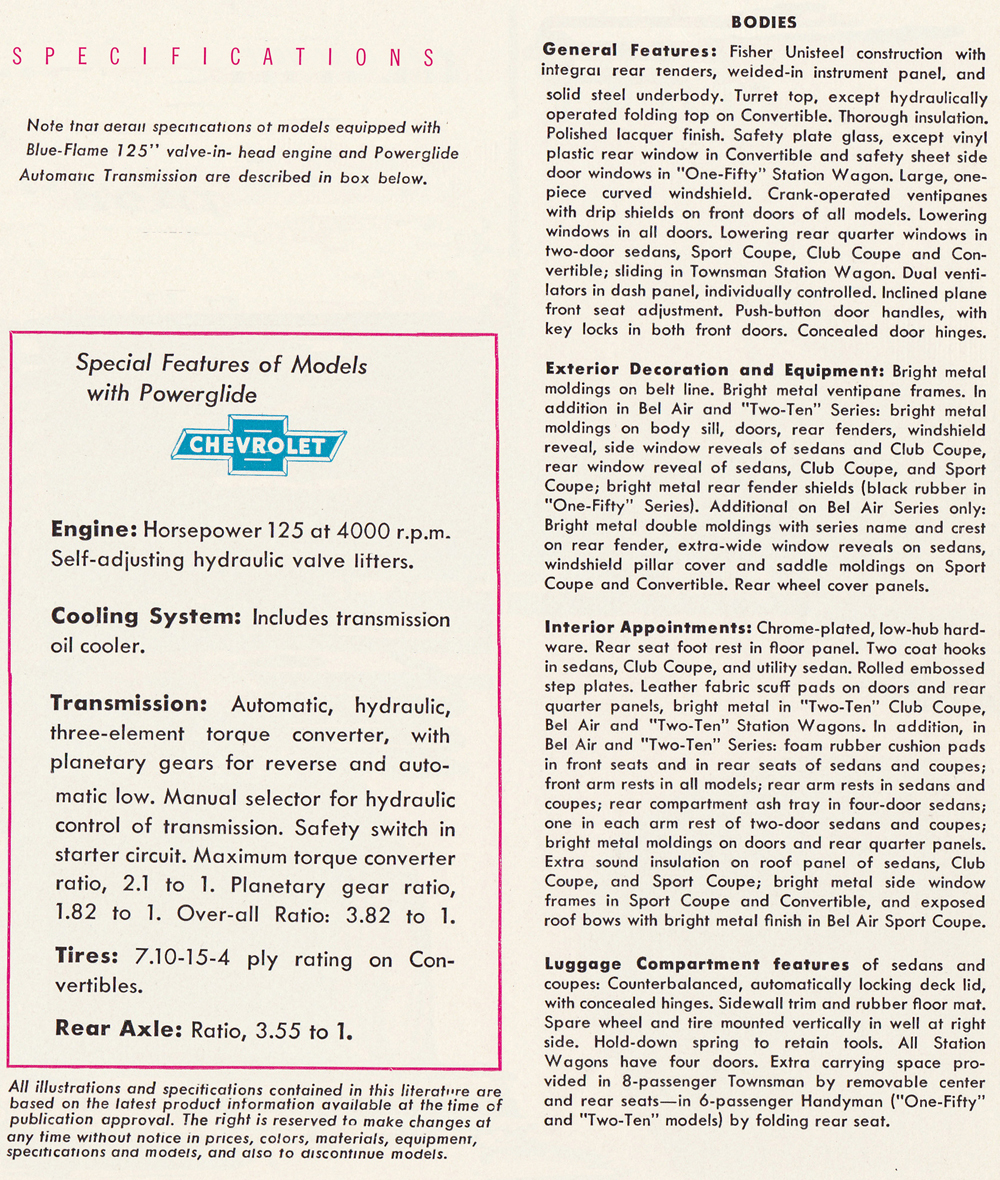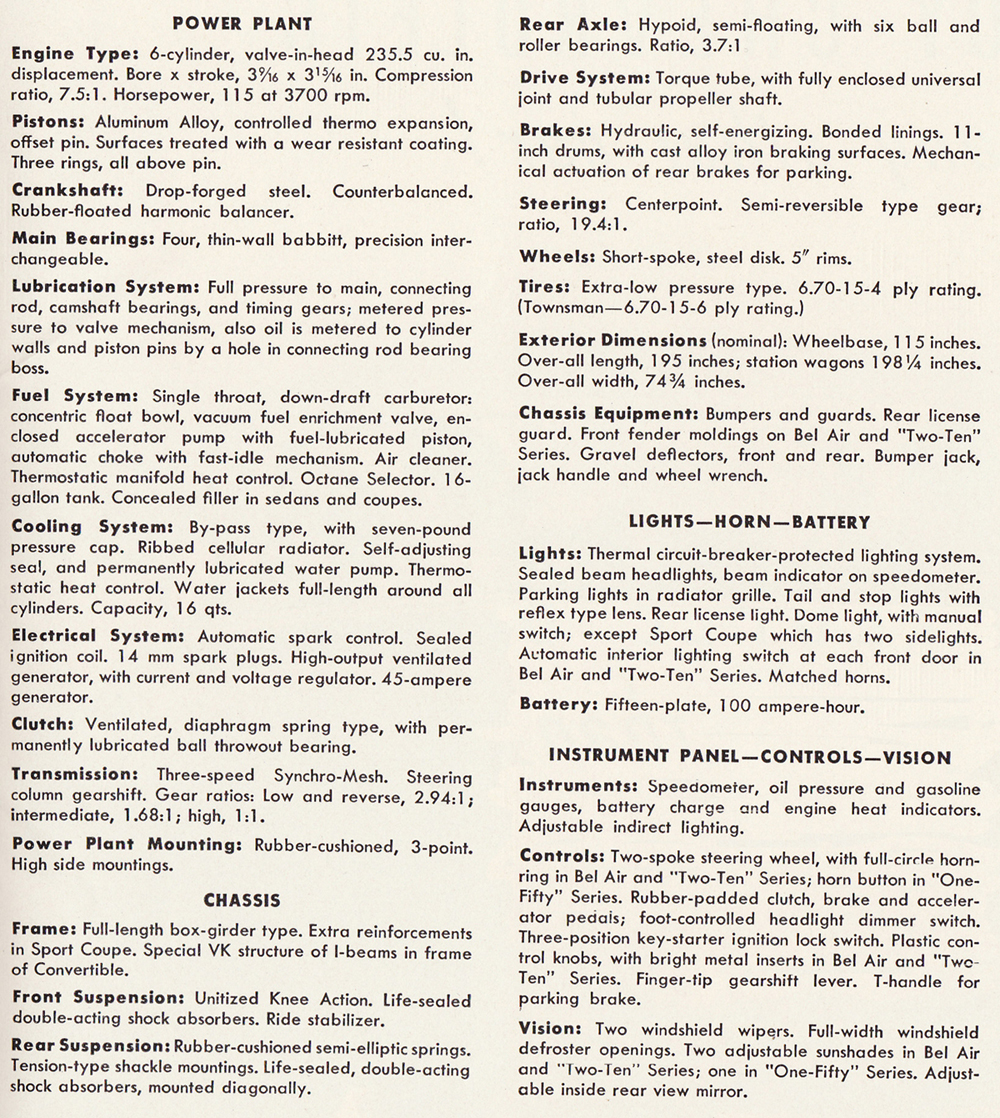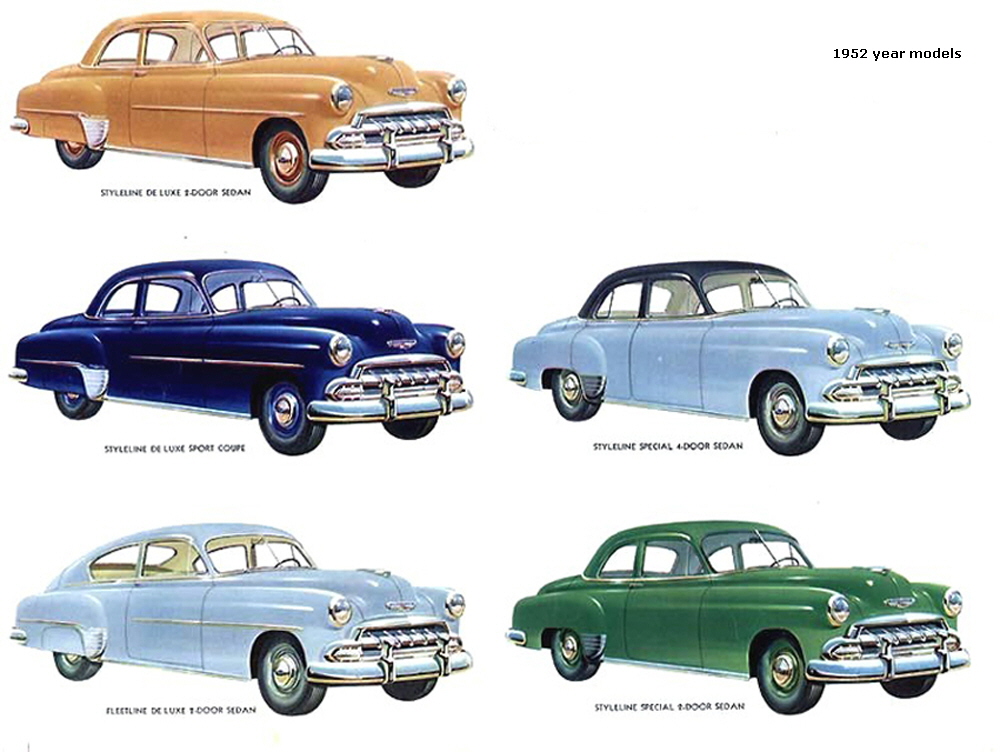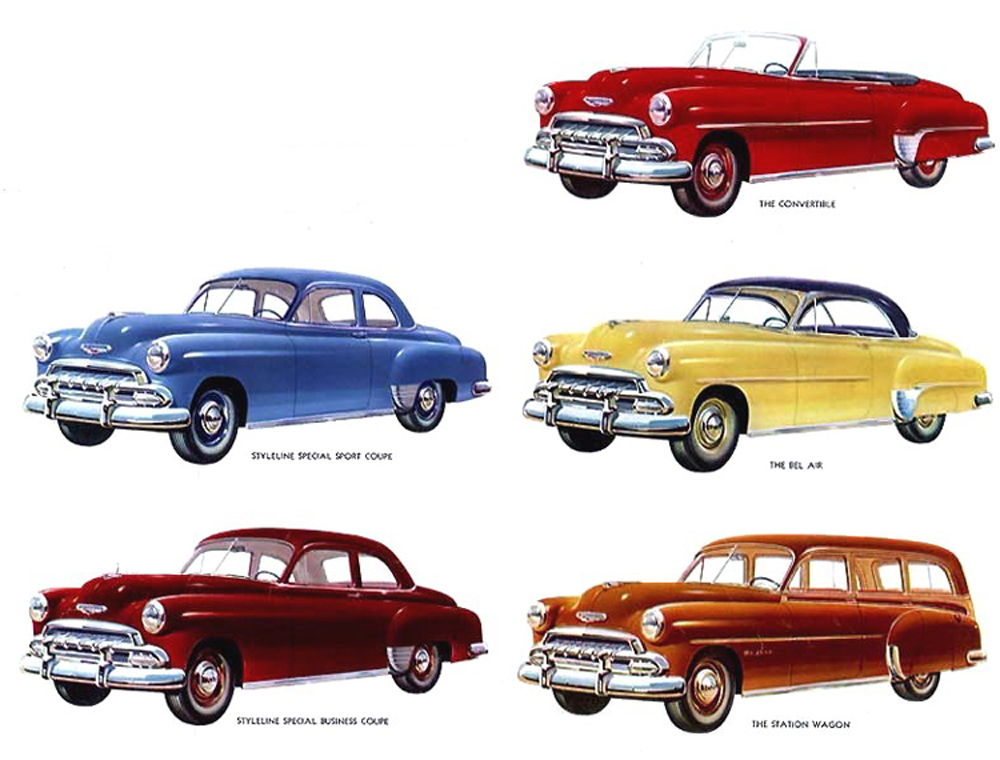|
|
|
(1950–1954) Chevrolet Bel Air - First generation In 1950, Chevrolet came up with a revolutionary style that would set a pattern for decades. The Bel Air Hardtop was styled as a convertible with a non-detachable solid roof. Models like this had been around since the 1920s, including early Chevrolets, with no degree of success. But the newly revised idea, sweeping the GM line from Chevrolet to Cadillac, had finally found its era. First year production reached only 76,662 as buyers cautiously tested the revised concept. The car cost $1,741 and weighed 3,225 lb. Front suspension was independent. In 1953 Chevrolet renamed its series and the Bel Air name was applied to the premium model range. Two lower series, the 150 and 210, also emerged. The 1953 Chevrolet was advertised as "Entirely new through and through," due to the restyled body panels, front and rear ends. However, essentially these Chevrolets had the same frame and mechanicals as the 1949-52 cars. The Bel Air series featured a wide chrome strip of molding from the rear fender bulge, to the rear bumper. The inside of this stripe was painted a coordinating color with the outside body color, and "Bel Air" scripts were added inside the strip. Lesser models had no model designation anywhere on the car, only having a Chevy crest on the hood and trunk. 1953 was the first year for a curved, one-piece windshield. Bel Air interiors had a massive expanse of chrome across the lower part of the dashboard, along with a de luxe Bel Air steering wheel with full chrome horn ring. Carpeting and full wheel covers rounded out Bel Air standard equipment. For 1954, the Bel Air stayed essentially the same, except for a revised grille and taillights. During these years, there were two engine choices, depending on the transmission ordered. Both engines were "Blue Flame" inline six cylinder OHV engines, featuring hydraulic valve lifters and aluminum pistons. The 115 hp (86 kW) engine was standard on stickshift models, with solid lifters and splash plus pressure lubrication. Powerglide cars got a 125 hp (93 kW) version which had hydraulic lifters and full pressure lubrication. In 1953-54, Bel Airs could be ordered in convertible, hardtop coupe, 2- and 4-door sedans, and, for 1954, the Beauville station wagon which featured woodgrain trim around the side windows. Power steering was optional for 1953; 1954 added power brakes, power seat positioner and power front windows. 1954 cars with stick shift used the 1953 Powerglide engine.
|
|
